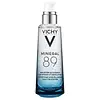What's inside
What's inside
 Key Ingredients
Key Ingredients

 Benefits
Benefits

 Concerns
Concerns

No concerns
 Ingredients Side-by-side
Ingredients Side-by-side

Salicylic Acid 1.5%
MaskingWater
Skin ConditioningDimethicone
EmollientGlycerin
HumectantHydrogenated Polyisobutene
EmollientAlcohol Denat.
AntimicrobialButylene Glycol
HumectantGlyceryl Stearate
EmollientAmmonium Polyacryloyldimethyl Taurate
Emulsion StabilisingIsopropyl Lauroyl Sarcosinate
Skin ConditioningOctyldodecanol
EmollientBHT
AntioxidantPEG-100 Stearate
Stearyl Alcohol
EmollientIsobutane
Dimethicone/Vinyl Dimethicone Crosspolymer
Skin ConditioningBlue 1 Lake
Cosmetic ColorantSilica Silylate
EmollientSodium Hydroxide
BufferingSilica
AbrasiveSodium Polyacrylate
AbsorbentPerlite
AbsorbentPhenylethyl Resorcinol
AntioxidantPoloxamer 338
EmulsifyingDisodium EDTA
Tocopherol
AntioxidantCapryloyl Salicylic Acid
ExfoliatingCapryloyl Glycine
CleansingXanthan Gum
EmulsifyingT-Butyl Alcohol
PerfumingAcrylonitrile/Methyl Methacrylate/Vinylidene Chloride Copolymer
Parfum
MaskingSalicylic Acid 1.5%, Water, Dimethicone, Glycerin, Hydrogenated Polyisobutene, Alcohol Denat., Butylene Glycol, Glyceryl Stearate, Ammonium Polyacryloyldimethyl Taurate, Isopropyl Lauroyl Sarcosinate, Octyldodecanol, BHT, PEG-100 Stearate, Stearyl Alcohol, Isobutane, Dimethicone/Vinyl Dimethicone Crosspolymer, Blue 1 Lake, Silica Silylate, Sodium Hydroxide, Silica, Sodium Polyacrylate, Perlite, Phenylethyl Resorcinol, Poloxamer 338, Disodium EDTA, Tocopherol, Capryloyl Salicylic Acid, Capryloyl Glycine, Xanthan Gum, T-Butyl Alcohol, Acrylonitrile/Methyl Methacrylate/Vinylidene Chloride Copolymer, Parfum
 Reviews
Reviews

Ingredients Explained
These ingredients are found in both products.
Ingredients higher up in an ingredient list are typically present in a larger amount.
Butylene Glycol (or BG) is used within cosmetic products for a few different reasons:
Overall, Butylene Glycol is a safe and well-rounded ingredient that works well with other ingredients.
Though this ingredient works well with most skin types, some people with sensitive skin may experience a reaction such as allergic rashes, closed comedones, or itchiness.
Learn more about Butylene GlycolGlycerin is already naturally found in your skin. It helps moisturize and protect your skin.
A study from 2016 found glycerin to be more effective as a humectant than AHAs and hyaluronic acid.
As a humectant, it helps the skin stay hydrated by pulling moisture to your skin. The low molecular weight of glycerin allows it to pull moisture into the deeper layers of your skin.
Hydrated skin improves your skin barrier; Your skin barrier helps protect against irritants and bacteria.
Glycerin has also been found to have antimicrobial and antiviral properties. Due to these properties, glycerin is often used in wound and burn treatments.
In cosmetics, glycerin is usually derived from plants such as soybean or palm. However, it can also be sourced from animals, such as tallow or animal fat.
This ingredient is organic, colorless, odorless, and non-toxic.
Glycerin is the name for this ingredient in American English. British English uses Glycerol/Glycerine.
Learn more about GlycerinWater. It's the most common cosmetic ingredient of all. You'll usually see it at the top of ingredient lists, meaning that it makes up the largest part of the product.
So why is it so popular? Water most often acts as a solvent - this means that it helps dissolve other ingredients into the formulation.
You'll also recognize water as that liquid we all need to stay alive. If you see this, drink a glass of water. Stay hydrated!
Learn more about Water